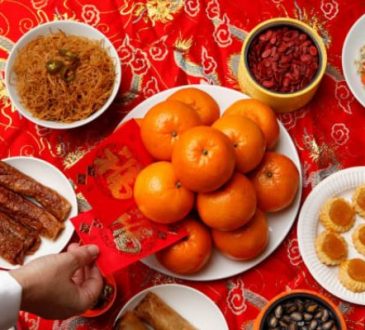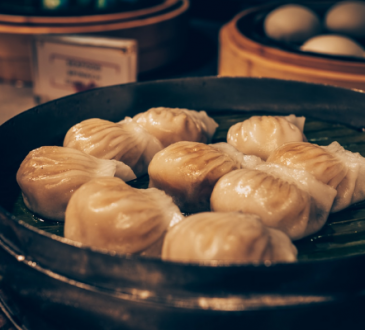Exploring the Culinary Artistry of Chinese Food with Vegetables
Chinese cuisine is renowned worldwide for its rich diversity, vibrant flavors, and exquisite culinary techniques. At the heart of this gastronomic tradition lies a profound appreciation for fresh ingredients, with vegetables playing a starring role in many dishes. From crunchy stir-fries to succulent braises, Chinese chefs elevate vegetables to new heights, creating dishes that are not only delicious but also nutritious and visually appealing. In this exploration of Chinese food with vegetables, we delve into the fascinating world of plant-based delights that exemplify the artistry of Chinese cooking.
Contents
The Cultural Significance of Vegetables in Chinese Cuisine:

In Chinese culture, vegetables hold a special place on the dining table, symbolizing health, prosperity, and balance. Traditionally, Chinese meals are structured around a principle of balance known as the “yin and yang,” where vegetables are considered a cooling “yin” element that complements the warming “yang” properties of meat and other ingredients.
Moreover, vegetables are deeply ingrained in Chinese culinary heritage due to the country’s agrarian roots. China’s vast and diverse landscape provides an abundance of fresh produce, ranging from leafy greens and root vegetables to exotic mushrooms and sea vegetables. This wealth of ingredients has inspired generations of chefs to create vegetable-centric dishes that showcase the natural flavors and textures of the produce.
Key Techniques in Chinese Vegetable Cooking:
Chinese cuisine boasts a repertoire of cooking techniques that highlight the inherent qualities of vegetables while infusing them with layers of flavor. Stir-frying, arguably the most iconic method, involves rapidly cooking vegetables in a hot wok with aromatics such as garlic, ginger, and scallions. This quick-cooking process preserves the vegetables’ crispness and vibrant colors while imparting a smoky wok hei (breath of the wok) flavor.
Another beloved technique is braising, where vegetables are simmered slowly in a savory sauce until tender and infused with the essence of the broth. Braised dishes like “Braised Tofu with Mushrooms” and “Braised Eggplant in Garlic Sauce” exemplify the art of coaxing out the natural sweetness of vegetables while enhancing their flavor with umami-rich ingredients like soy sauce and fermented bean paste.
Steaming is another prevalent method in Chinese vegetable cookery, prized for its ability to retain the vegetables’ natural flavors and nutrients. Steamed dishes like “Steamed Bok Choy with Oyster Sauce” and “Steamed Dumplings with Vegetable Filling” showcase the delicate textures and subtle flavors that result from this gentle cooking process.
Moreover, pickling and fermenting are traditional preservation techniques that not only extend the shelf life of vegetables but also add complexity to their taste profiles. Tangy pickled mustard greens and spicy fermented cabbage are staples in many regional cuisines, providing a refreshing contrast to richer dishes.
Iconic Vegetable-Based Dishes in Chinese Cuisine:

Chinese cuisine offers a vast array of vegetable-based dishes that cater to every palate and dietary preference. Here are some iconic examples that highlight the diversity and ingenuity of Chinese vegetable cookery:
- Mapo Tofu: Originating from Sichuan province, Mapo Tofu is a fiery and aromatic dish featuring silky tofu cubes simmered in a spicy sauce with minced meat and Sichuan peppercorns. While traditionally made with pork or beef, vegetarian versions substitute the meat with finely chopped vegetables like mushrooms and bamboo shoots, resulting in a hearty and satisfying dish that’s packed with flavor.
- Kung Pao Cauliflower: A modern twist on the classic Kung Pao Chicken, this dish features crispy cauliflower florets tossed in a tangy and slightly sweet sauce with roasted peanuts and dried chili peppers. The cauliflower absorbs the savory-sweet flavors of the sauce, creating a tantalizing combination of textures and tastes that’s sure to please even the most discerning palate.
- Buddha’s Delight (Lo Han Jai): A staple of Chinese vegetarian cuisine, Buddha’s Delight is a medley of braised vegetables, tofu, mushrooms, and other plant-based ingredients simmered in a fragrant broth. This auspicious dish is often served during Lunar New Year celebrations and other festive occasions, symbolizing purity, abundance, and harmony.
- Hot and Sour Soup: A beloved comfort food in Chinese cuisine, Hot and Sour Soup is a flavorful broth loaded with tofu, mushrooms, bamboo shoots, and wood ear fungus, seasoned with vinegar, soy sauce, and aromatic spices. The tangy-sour broth and hearty vegetables make it a perfect starter or a satisfying meal on its own.
- Ma Po Eggplant: Hailing from the Sichuan province, Ma Po Eggplant is a spicy and aromatic dish featuring tender eggplant slices stir-fried with minced pork, fermented black beans, garlic, and chili paste. The eggplant absorbs the bold flavors of the sauce, creating a mouthwatering dish that’s both comforting and deeply satisfying.
Health Benefits of Chinese Vegetable-Based Cuisine:

In addition to their exquisite flavors and culinary versatility, Chinese vegetable-based dishes offer a myriad of health benefits. Rich in vitamins, minerals, and antioxidants, vegetables are an essential component of a balanced diet that supports overall health and well-being. By incorporating a variety of vegetables into their meals, individuals can enjoy an array of nutrients that promote digestion, boost immunity, and reduce the risk of chronic diseases such as heart disease, diabetes, and certain cancers.
Furthermore, Chinese cooking techniques such as stir-frying, steaming, and braising preserve the nutritional integrity of vegetables, ensuring that they retain their vitamins and minerals during the cooking process. Unlike deep-frying or excessive use of oil, which can diminish the nutritional value of foods, Chinese vegetable cookery emphasizes light and healthy cooking methods that highlight the natural goodness of fresh produce.
Moreover, the emphasis on balance and moderation in Chinese cuisine encourages mindful eating habits that promote satiety and prevent overindulgence. By savoring each bite and paying attention to the flavors and textures of their food, individuals can cultivate a deeper connection with their meals and foster a healthier relationship with food.
Conclusion:
Chinese cuisine’s rich tradition of vegetable-based cooking exemplifies the artistry and ingenuity of culinary craftsmanship. From the fiery flavors of Sichuan to the delicate aromas of Cantonese cuisine, vegetables play a central role in dishes that delight the senses and nourish the body. By embracing the vibrant colors, textures, and flavors of fresh produce, Chinese chefs create culinary masterpieces that celebrate the bountiful gifts of nature and inspire a lifelong appreciation for wholesome and delicious food. So, the next time you sit down to enjoy a Chinese meal, savor each bite and revel in the exquisite flavors of vegetable-based delights that have captivated palates for centuries.



